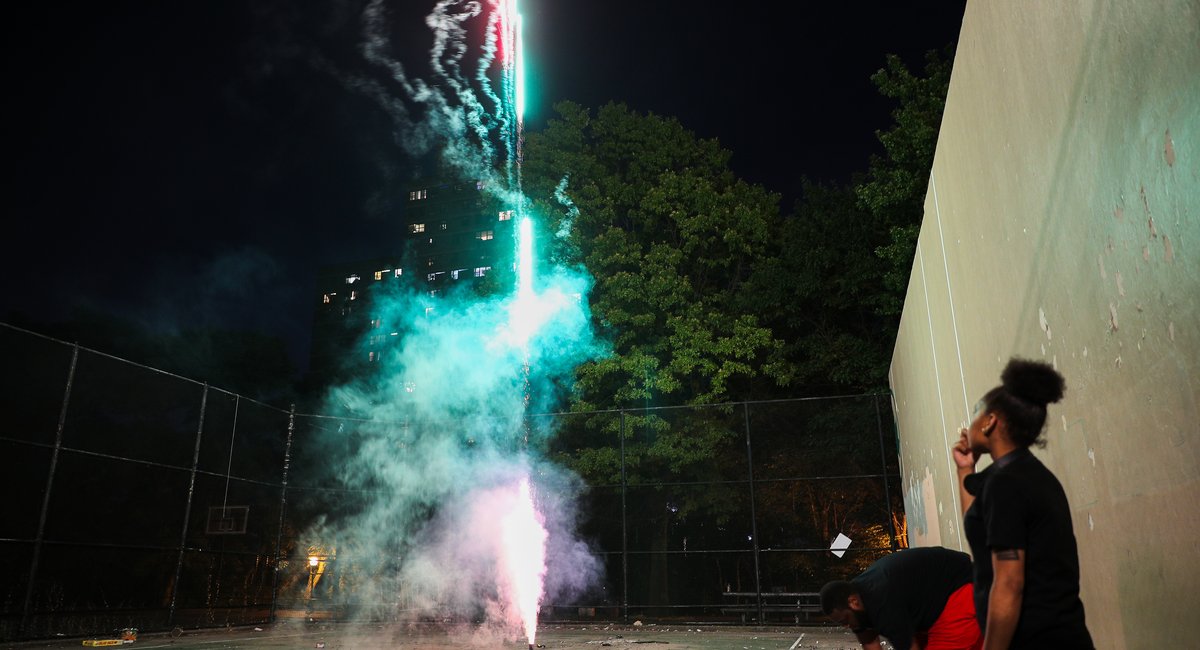Was that fireworks … or gunshots?
It’s fireworks season again in the city, and New Yorkers are asking — to partners next to them in bed, strangers on the street at dusk and neighbors in a group text — the eternal urban question about what they just heard.
Knowing the difference between the near-distant sounds of gunfire and that of pyrotechnics can be important. While both acts are generally illegal in New York, distinguishing between them may determine whether you run for cover and call 911 — or complain about the noise and call 311 (there’s a form for that).
“People have been asking this type of question for a while,” said John V. Goodpaster, a chemist at Indiana University who studied explosives in a laboratory for the federal Bureau of Alcohol, Tobacco and Firearms. “The two things are pretty closely related at least sonically, so it’s pretty easy to get them confused.”
Online neighborhood forums are rife with such confusion, like: “Gun shots near the Brooklyn Bridge? Or fireworks?”
Residents of Astoria, Williamsburg and Jersey City all have the same question about what’s happening outside in the dark nearby, or maybe far away. In fact, the sounds are so similar that after shootings, Goodpaster said, and witnesses often tell police after shootings that at first they thought they heard fireworks.
So, via Goodpaster, here’s what to listen for when interpreting these two sounds of summer:
Volume: “Equally loud.”
Cadence: Blast sounds from a gun are spaced out, with regular, repeated shots. Most guns in the U.S. are semi-automatic, so the trigger has to be pulled for every shot — whereas with fireworks, there’s “a cacophony of sound coming out” at once.
Sounds like: Crackling noises and whistles. That’s the easiest way to tell that something is a pyrotechnic. Since fireworks burn slower, their sound is more expansive. A gun makes a “sharper” noise, and the sound doesn’t last as long.
Visually: Pyrotechnics release both light and smoke. Firearms generally emit neither.
However: If there are multiple weapons involved in gunfire, as there sometimes are, “it’ll be tougher to tell the difference between that and a pyrotechnic.”
The similarity between the two sounds was at issue in a recent city comptroller report about New York City’s gunfire detection system, Shotspotter. The controversial $54 million system is tasked with detecting gunfire and, importantly, distinguishing between gunfire and fireworks.
But City Comptroller Brad Lander panned the ShotSpotter microphone system, describing it as inaccurate and a waste of money, and saying it has been criticized that it mixes the two sounds up. That leads officers to waste resources investigating shootings that didn’t actually happen, his report said.
The company that makes ShotSpotter said in a statement that it has a 97% accuracy rate across police departments nationwide using “sophisticated technology and well-known science to filter out sounds that are not likely to be gunfire.”
By analyzing “the audio waveform, the ShotSpotter system is highly accurate at distinguishing gunfire from other bangs, booms, and pops.”
ShotSpotter’s microphones will be put to test over the Fourth of July, Goodpaster said. And so will New Yorkers’ ears.
